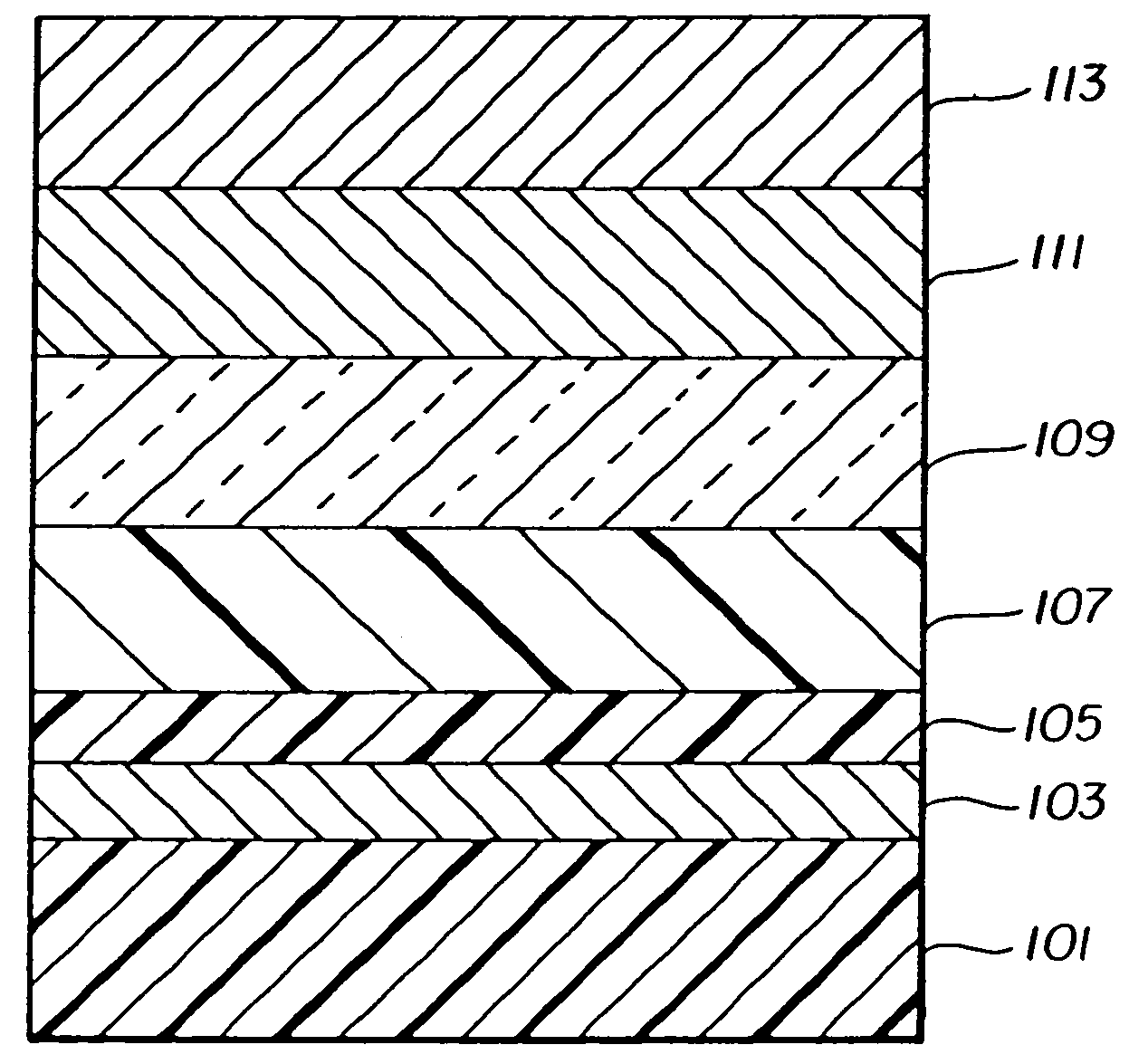Organic element for electroluminescent devices
a light-emitting diode and electroluminescent technology, applied in the direction of solid-state devices, discharge tubes/lamp details, natural mineral layered products, etc., can solve the problems of device contamination, device performance limitations, device performance limitations, etc., and achieve low sublimation temperatures and good luminance efficiency
- Summary
- Abstract
- Description
- Claims
- Application Information
AI Technical Summary
Benefits of technology
Problems solved by technology
Method used
Image
Examples
example 1
Synthesis (Scheme 1)
[0172]Preparation of compound (3): Under a nitrogen atmosphere, acetylenic compound (2) (5.10 g, 30 mMole), was dissolved in dimethylformamide (DMF) (70 mL) and the solution cool to 0° C. Potassium t-butoxide (KButO) (4.04 g, 36 mMole), was added and the mixture stirred well for approximately 15 minutes. To this mixture was then added the benzophenone (1) (10 g, 30 mMole). Stirring was continued at 0° C. for approximately 30 minutes and then allowed to come to room temperature over a 1-hour period. At the end of this time the solution was cooled to 0° C. and the reaction treated with saturated sodium chloride (20 mL). The mixture was then diluted with ethyl acetate, washed with 2N—HCl (×3), dried over MgSO4, filtered and concentrated under reduced pressure. The crude product was dissolved in 20% ethyl acetate in heptane and subjected to pressure chromatography over silica gel eluting with the same solvent mixture. The main material was collected. Yield of compoun...
example 2
Sublimation Temperatures
[0174]The sublimation temperatures at 5×10−6 Torr needed to deposit the inventive and comparative dopants at 1% and 2%-wt. of the host are recorded in Table 1. This sublimation temperature is the temperature required to sublime a specific amount of material, recorded as thickness, onto the device at a specific rate and is given in Angstroms / sec., (A / s). For dopants at 1%-wt of host, this rate is 0.04 A / s and at 2%-wt it is 0.08 A / s. The samples shown in the table are divided into groups, each group with its own comparative dopant. Comp-1 is the comparative example for Inv-1 through Inv-4; Comp-2 is the comparative example for Inv-5, Inv-6 and Inv-9; Comp-3 is the comparative example for Inv-15; and Comp-4 is the comparative example for Inv-23 and Inv-24. The comparative dopants have the same basic structure as the inventive dopants in its group but without the fluorine or fluorine-containing group. Comp-1 is the parent rubrene. It is well known to those in th...
example 3
EL Device Fabrication—Inventive Example
[0178]An EL device satisfying the requirements of the invention was constructed as Sample 15 in the following manner:
[0179]A glass substrate coated with an 85 nm layer of indium-tin oxide (ITO) as the anode was sequentially ultrasonicated in a commercial detergent, rinsed in deionized water, degreased in toluene vapor and exposed to oxygen plasma for about 1 min.
[0180]a) Over the ITO was deposited a 1 nm fluorocarbon (CFx) hole-injecting layer (HIL) by plasma-assisted deposition of CHF3.
[0181]b) A hole-transporting layer (HTL)of N,N′-di-1-naphthalenyl-N,N′-diphenyl-4,4′-diaminobiphenyl (NPB) having a thickness of 150 nm was then evaporated from a tantalum boat.
[0182]c) A 37.5 nm light-emitting layer (LEL) of tris(8-quinolinolato)aluminum (III) (AlQ3) and Inv-1 (2%-wt, see Table 2) were then deposited onto the hole-transporting layer. These materials were also evaporated from tantalum boats.
[0183]d) A 37.5 nm electron-transporting layer (ETL) of...
PUM
| Property | Measurement | Unit |
|---|---|---|
| wavelength | aaaaa | aaaaa |
| wavelength of maximum emission | aaaaa | aaaaa |
| sublimation temperature | aaaaa | aaaaa |
Abstract
Description
Claims
Application Information
 Login to View More
Login to View More - R&D
- Intellectual Property
- Life Sciences
- Materials
- Tech Scout
- Unparalleled Data Quality
- Higher Quality Content
- 60% Fewer Hallucinations
Browse by: Latest US Patents, China's latest patents, Technical Efficacy Thesaurus, Application Domain, Technology Topic, Popular Technical Reports.
© 2025 PatSnap. All rights reserved.Legal|Privacy policy|Modern Slavery Act Transparency Statement|Sitemap|About US| Contact US: help@patsnap.com



